- Home
- Graham Hancock
Magicians of the Gods: The Forgotten Wisdom of Earth's Lost Civilization Page 4
Magicians of the Gods: The Forgotten Wisdom of Earth's Lost Civilization Read online
Page 4
Quetzalcoatl was a great civilizing agent who entered Mexico at the head of a band of strangers. He imported the arts into the country and especially fostered agriculture … He built spacious and elegant houses, and inculcated a type of religion which fostered peace.23
So, in summary, as well as a complex pattern of shared symbols and iconography, Quetzalcoatl and Oannes shared the same civilizing mission, which they delivered in widely separated regions of the world in an epoch that is always described as being very far back in time—remote, antediluvian and hoary with age.
Could it have been as far back as 9600 BC—the epoch of Göbekli Tepe where many of the same symbols are found and where, although we have no surviving legends, the signs of a civilizing mission in the form of the sudden appearance of agriculture and monumental architecture are everywhere to be seen?
The implications, should I ever be able to prove this hypothesis, are stunning. At the very least it would mean that some as yet unknown and unidentified people somewhere in the world had already mastered all the arts and attributes of a high civilization more than twelve thousand years ago in the depths of the last Ice Age and had sent out emissaries around the world to spread the benefits of their knowledge. Who might these shadowy emissaries have been, these sages, these “Magicians of the Gods” as I was already beginning to think of them? And why was there this insistent connection to the date of 9600 BC?
For as Klaus Schmidt rightly pointed out as he showed me round Göbekli Tepe under the baking sun of the Taurus Mountains, 9600 BC is indeed “an important date”—important not only because it marks the end of the Ice Age but for another, rather surprising reason as well.
The Greek lawmaker Solon visited Egypt in 600 BC and there he was told a very extraordinary story by the priests at the Temple of Sais in the Nile Delta—a story that was eventually handed down to his more famous descendant Plato, who in due course shared it with the world in his Dialogues of Timaeus and Critias.
It is, of course, the story of the great lost civilization called Atlantis swallowed up by flood and earthquake in a single terrible day and night nine thousand years before the time of Solon.24
Or, in our calendar, in 9600 BC.
Chapter 2
The Mountain of Light
“Everything we’ve been taught about the origins of civilization may be wrong,” says Danny Hilman Natawidjaja, PhD, senior geologist with the Research Center for Geotechnology at the Indonesian Institute of Sciences. “Old stories about Atlantis and other great lost civilizations of prehistory, long dismissed as myths by archaeologists, look set to be proved true.”
It’s December 2013. We’re in Cianjur Regency, about 900 meters (2,950 feet) above sea level and 70 kilometers (43 miles) west of the city of Bandung on the island of Java, Indonesia. I’m climbing with Dr. Natawidjaja up the steep slope of a 110 meter (360 feet) high step-pyramid set amidst a magical landscape of volcanoes, mountains and jungles interspersed with paddy fields and tea plantations.
Figure 9: Artist’s impression of ancient Gunung Padang. (Courtesy of Pon S. Purajatnika)
In 1914, lying scattered among the dense trees and undergrowth that then covered the summit of the pyramid, ancient man-made structures formed from blocks of columnar basalt were first shown to archaeologists. Local people held the site to be sacred and called it Gunung Padang, the name it still goes by today, often mistranslated as “Mountain Field” by those unaware that the language of this area is not Indonesian but Sundanese—in which Gunung Padang means “Mountain of Light,” or “Mountain of Enlightenment.” The structures were found to be arranged across five terraces with a combined area of about 150 meters (492 feet) long by 40 meters (131 feet) wide. The visiting archaeologists were told that the terraces had been used as a place of meditation and retreat since time immemorial—and again this remains true today.
However, neither the archaeologists, nor apparently the locals realized the pyramid was a pyramid. It was believed to be a natural hill, somewhat modified by human activity, until Natawidjaja and his team began a geophysical survey here in 2011 using ground-penetrating radar, electrical resistivity and seismic tomography. By then the summit had long since been cleared and the structures on the terraces recognized as works of megalithic architecture. But no radiocarbon dating had yet been done and the age attributed to the site—about 1000 BC—was based on guesswork rather than on excavations.
The first scientific radiocarbon dating was done by Natawidjaja himself on organic materials in soils underlying the megaliths at or near the surface. The dates produced—around 500 to 1500 BC—were close enough to the archaeological guesswork to cause no controversy. But a surprise was in store as Natawidjaja and his team extended their investigation using tubular drills that brought up cores of earth and stone from much deeper levels.
First, the drill cores contained evidence—fragments of worked columnar basalt—that more man-made megalithic structures lay far beneath the surface. Secondly, the organic materials brought up in the drill cores began to yield older and older dates—3000 BC to 5000 BC, then 9600 BC as the drills bit deeper, then around 11,000 BC, then 15,000 BC and finally, at depths of 27.5 meters (90 feet) and more, an astonishing sequence of dates of 20,000 BC to 22,000 BC and earlier.
“This was not at all what my colleagues in the world of archaeology expected or wanted to hear,” says Natawidjaja, a world-renowned expert in the geology of megathrust earthquakes who earned his PhD at Cal Tech in the United States and who, it becomes apparent, regards archaeology as a thoroughly unscientific discipline.
A truly cataclysmic period …
The problem is that those dates going back before 9600 BC take us deep into the last Ice Age, when Indonesia was not a series of islands as it is today but was part of a vast antediluvian Southeast Asian continent dubbed “Sundaland” by geologists.
Sea level was 122 meters (400 feet) lower then. Huge ice caps 3.2 kilometers (2 miles) deep covered most of Europe and North America until the ice caps began to melt. Then all the water stored in them returned to the oceans and sea-level rose, submerging many parts of the world where humans had previously lived. Thus Britain was joined to Europe during the Ice Age (there was no English Channel or North Sea). Likewise there was no Red Sea, no Persian Gulf, Sri Lanka was joined to southern India, Siberia was joined to Alaska, Australia was joined to New Guinea—and so on and so forth. It was during this epoch of sea-level rise, sometimes slow and continuous, sometimes rapid and cataclysmic, that the Ice Age continent of Sundaland was submerged with only the Malaysian Peninsula and the Indonesian islands as we know them today high enough to remain above water.
Figure 10
Figure 11: The flooding of Sundaland at the end of the last Ice Age.
As we saw in the last chapter, the established archaeological view of the state of human civilization until the end of the last Ice Age is that our ancestors were primitive hunter-gatherers, ignorant of agriculture and incapable of any architectural feats bigger than wigwams and bivouacs.
This is why Göbekli Tepe in southeastern Turkey is so significant—because it breaks that paradigm wide open and cries out for serious consideration of a possibility, previously relegated to the lunatic fringe, that civilization might be much older and more mysterious than we thought.1 With the date of its foundation presently set at 9600 BC (“exactly 9600 BC” as Klaus Schmidt was at pains to point out to me), Göbekli Tepe also requires us to reopen the cold case of Atlantis which archaeologists have long ridiculed, pouring scorn and derision on anyone daring to utter the much reviled “A” word. As noted at the end of the last chapter, the Greek philosopher Plato, whose dialogues Timaeus and Critias contain the earliest surviving mention of the fabled sunken kingdom, sets the catastrophic destruction and submergence of Atlantis by floods and earthquakes at 9,000 years before the time of Solon2—i.e. at exactly 9600 BC. The Greeks could not have known of Göbekli Tepe (let alone that it was mysteriously founded at the very moment Atlantis was said to have died). Moreo
ver they had no access to the Greenland ice cores dating the end of the Ice Age to 9620 BC, just twenty years before the foundation of Göbekli Tepe, nor to modern scientific knowledge about the rapidly rising sea levels (often accompanied by cataclysmic earthquakes as the weight of the melting ice caps was removed from the continental landmasses) that occurred in this period. With all this in mind, therefore, the date Plato gives is, to say the least, an uncanny coincidence.
In Danny Natawidjaja’s view, however, it is no coincidence at all. His research at Gunung Padang has convinced him that Plato was right about the existence of a high civilization in the depths of the last Ice Age—a civilization that was indeed brought to a cataclysmic end involving floods and earthquakes in an epoch of great global instability between 10,800 BC and 9600 BC.
This epoch, which geologists call the “Younger Dryas,” has long been recognized as mysterious and tumultuous. In 10,800 BC, when it began, the earth had been emerging from the Ice Age for roughly 10,000 years, global temperatures were rising steadily and the ice caps were melting. Then there was a sudden dramatic return to colder conditions—nearly as cold as at the peak of the Ice Age 21,000 years ago. This short, sharp deep freeze lasted for 1,200 years until 9600 BC when the warming trend resumed, global temperatures shot up again and the remaining ice caps melted very suddenly, dumping all the water they contained into the oceans.
Figure 12: All of human history as it is presently taught to us follows the Younger Dryas—the mysterious cataclysmic period between 10,800 BC (around 12,800 years ago) and 9,600 BC (around 11,600 years ago).
“It is difficult,” Natawidjaja says, “for us to imagine what life on earth must have been like during the Younger Dryas. It was a truly cataclysmic period of immense climate instability and terrible, indeed terrifying, global conditions. It’s not surprising that many large animal species, such as the mammoths, went extinct during this precise time and of course it had huge effects on our ancestors—not just those ‘primitive’ hunter-gatherers the archaeologists speak of but also, I believe, a high civilization that was wiped from the historical record by the upheavals of the Younger Dryas.”
A controversial pyramid
What has brought Natawidjaja to this radical view is the evidence he and his team have uncovered at Gunung Padang. When their drill cores began to yield very ancient carbon dates from organic materials embedded in clays filling the gaps between worked stones, they expanded their investigation using geophysical equipment—ground-penetrating radar, seismic tomography and electrical resistivity—to get a picture of what lay under the ground. The results were stunning, showing layers of massive construction using the same megalithic elements of columnar basalt that are found on the surface but with courses of huge basaltic rocks beneath them extending down to thirty meters (100 feet) and more beneath the surface. At those depths the carbon dates indicate that the megaliths were put in place more than 12,000 years ago and in some cases as far back as 24,000 years ago.
Columnar basalt does form naturally—the famous Giant’s Causeway in Northern Ireland is an example—but at Gunung Padang it has been used as a building material and is laid out in a form never found in nature.
“The geophysical evidence is unambiguous,” Natawidjaja says. “Gunung Padang is not a natural hill but a man-made pyramid and the origins of construction here go back long before the end of the last Ice Age. Since the work is massive even at the deepest levels, and bears witness to the kinds of sophisticated construction skills that were deployed to build the pyramids of Egypt, or the largest megalithic sites of Europe, I can only conclude that we’re looking at the work of a lost civilization and a fairly advanced one.”
“The archaeologists won’t like that,” I point out.
“They don’t!” Natawidjaja agrees with a rueful smile. “I’ve already got myself into a lot of hot water with this. My case is a solid one, based on good scientific evidence, but it’s not an easy one. I’m up against deeply entrenched beliefs.”
The next step will be a full-scale archaeological excavation. “We have to excavate in order to interrogate our remote sensing data and our carbon dating sequences and either confirm or deny what we believe we’ve found here,” says Natawidjaja, “but unfortunately there’s a lot of obstacles in our way.”
When I ask what he means by obstacles he replies that some senior Indonesian archaeologists are lobbying the government in Jakarta to prevent him from doing any further work at Gunung Padang on the grounds that they “know” the site is less than three thousand years old and see no justification for disturbing it.
“I don’t deny that the megaliths at the surface are less than three thousand years old,” Natawidjaja hastens to add, “but I suggest they were put here because Gunung Padang has been recognized as a sacred place since time immemorial. It’s the deepest layers of the structure at between 12,000 and more than 20,000 years old that are the most important. They have potentially revolutionary implications for our understanding of history and I think it’s vital that we be allowed to investigate them properly.”
Atlantis
Happily, there was a decisive Presidential intervention during 2014 and I can now report that Danny (I’ll use his first name henceforth as we have become friends) was given carte blanche to excavate the site. He and his team began work in August 2014, completing a short season there between August and October, but as the experience at Göbekli Tepe shows, painstaking, detailed archaeology is a slow process and they do not expect to reach the deepest layers until 2017 or 2018. As the first season neared its end, however, Danny emailed me an update:
The research progress has been great. We have excavated three more spots right on top of the megalithic site in the past couple of weeks, which give more evidence and details about the buried structures. We have uncovered lots more stone artifacts from the excavations. The existence of the pyramid-like structure beneath the megalithic site is now loud and clear; even for non-specialists, it is not too difficult to understand if they come and see for themselves. We have found some kind of open hall buried by soil five to seven meters thick; however we have not yet got into the main chamber. We are now drilling to the suspected location of the chamber (based on subsurface geophysic) in the middle of the megalithic site.3
Buried structures? Chambers? Ah, yes, I forgot to mention those. We’ll go into the implications of all this in more detail in a later chapter, but in brief, the geophysical survey work that Danny and his team did between 2011 and 2013, deploying the latest technologies in electrical resistivity, seismic tomography, ground-penetrating radar and core drilling, revealed not only deeply buried massive constructions and very ancient carbon dates at Gunung Padang but also the presence of three further hidden and as yet unexcavated chambers, so rectilinear in form that they are most unlikely to be natural. The largest of these lies at a depth of between 21.3 and 27.4 meters (70 to 90 feet) and measures approximately 5.5 meters (18 feet) high, 13.7 meters (45 feet) long and 9.1 meters (30 feet) wide.
Could it be the fabled “Hall of Records” of Atlantis? Danny has put his impeccable scientific credentials on the line with the controversial claim that it might be. Not only does he refuse to scoff at the idea of Atlantis but also he’s written a book arguing that Indonesia—or rather the huge areas of ancient “Sundaland” that were drowned by rising sea levels at the end of the Ice Age—might actually be Atlantis.4
Danny and I made an extensive research trip around the whole of the Indonesian archipelago in June 2014 searching out megalithic sites off the beaten track that have never been properly studied by archaeologists. In Chapter Eighteen I’ll describe our findings, and how they relate to the Gunung Padang mystery, but meanwhile I want to report here on the opinion of Dr. Robert Schoch, Professor of Geology at Boston University, who was with me in December 2013 when I first met Danny at Gunung Padang.5
The view of Professor Robert Schoch
Schoch is a renowned figure, indeed notorious, for the case he’s made, based
on strict geological evidence, that the Great Sphinx of Giza bears the unmistakable erosion patterns of thousands of years of heavy rainfall.6 This means it has to be much older than 2500 BC (the orthodox date, when Egypt received no more rain than it does today) and must originally have been carved around the end of the Ice Age when the Nile valley was subjected to a long period of intense precipitation.
A tall, rangy, scholarly man with a full beard and a mop of unruly hair, Schoch was in his element at Gunung Padang carefully interrogating the results of the geophysical scans with Danny, collecting samples and minutely examining the site. Afterward, when he’d returned to the US and had time to analyze the data, he wrote:
The first important observation is that … Gunung Padang goes back to before the end of the last Ice Age, circa 9700 BC. Based on the evidence, I believe that human use of the site began by circa 14,700 BC. Possibly the earliest use of the site goes back to 22,000 BC, or even earlier.
In my assessment, Layer Three, some 4 to 10 meters (13.1 to 32.8 feet) or so below the surface, includes the period of the very end of the last Ice Age, circa 10,000 to 9500 BC, when major climatic changes took place, with dramatic global warming, rising sea levels, torrential rains, increased earthquake and volcanic activity, widespread wildfires … and other catastrophes occurring across the surface of earth … There is evidence of collapsed structures in Layer Three, possibly the result of the tumultuous conditions at that time.
Visiting Gunung Padang, pondering the dates and evidence of collapse and rebuilding that may have occurred here, I could not help but think about another major site—representing very ancient civilization—that spans the end of the last Ice Age, namely Göbekli Tepe in southeastern Turkey … I also think of Egypt and my own work on re-dating the Great Sphinx. The extreme weathering and erosion seen on the proto-Sphinx (the head was re-carved and the monument reused during dynastic times), caused by torrential rains, could have been a result of the extreme climatic changes at the end of the last Ice Age.

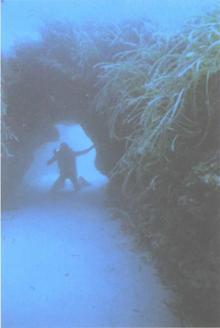 Underworld: The Mysterious Origins of Civilization
Underworld: The Mysterious Origins of Civilization The Master Game: Unmasking the Secret Rulers of the World
The Master Game: Unmasking the Secret Rulers of the World America Before
America Before Entangled
Entangled War God: Nights of the Witch
War God: Nights of the Witch War God: Return of the Plumed Serpent
War God: Return of the Plumed Serpent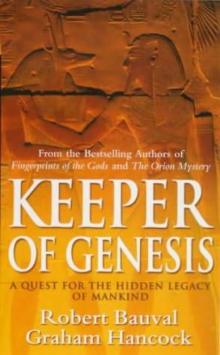 The Message of the Sphinx AKA Keeper of Genesis
The Message of the Sphinx AKA Keeper of Genesis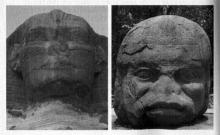 Fingerprints of the Gods
Fingerprints of the Gods The Sign and the Seal
The Sign and the Seal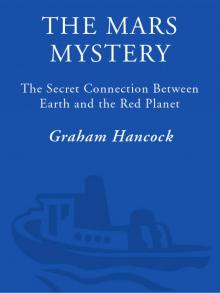 The Mars Mystery: The Secret Connection Between Earth and the Red Planet
The Mars Mystery: The Secret Connection Between Earth and the Red Planet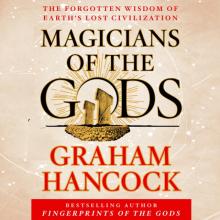 Magicians of the Gods: The Forgotten Wisdom of Earth's Lost Civilization
Magicians of the Gods: The Forgotten Wisdom of Earth's Lost Civilization War God
War God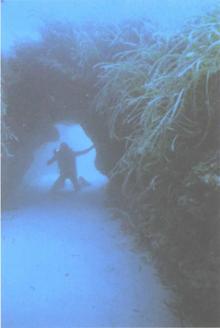 Underworld
Underworld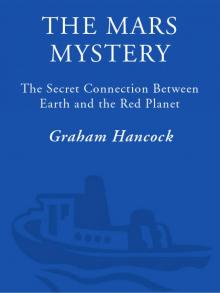 The Mars Mystery
The Mars Mystery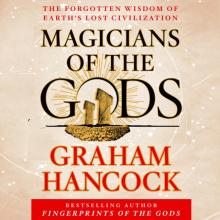 Magicians of the Gods
Magicians of the Gods The Master Game
The Master Game